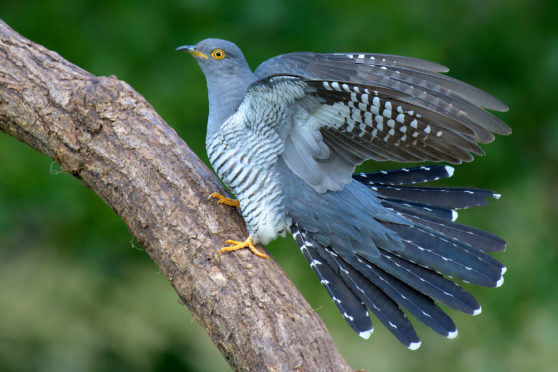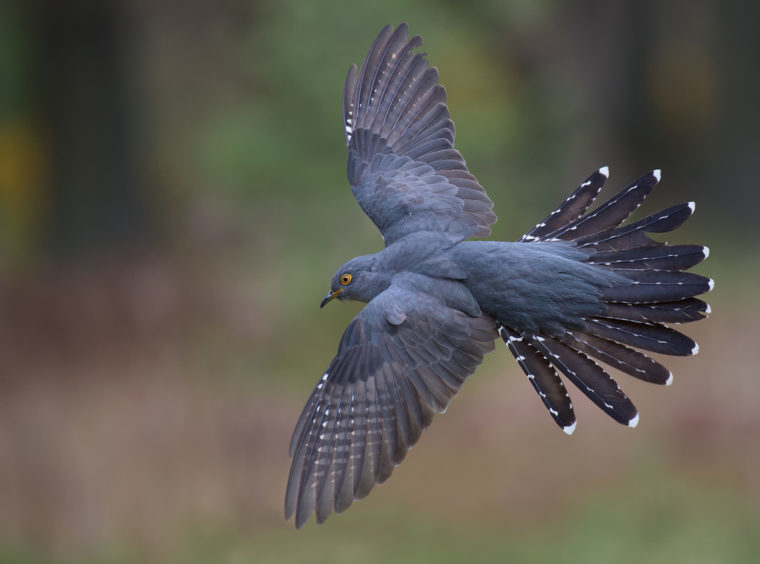Warm breeze against evening sky, gently caressing the rolling Perthshire hills. But the soft rush of wind is soon broken by an almost hypnotic call – ‘coo-koo, coo-koo, coo-koo’ – a sound that seems to penetrate every fold and gully of the hillside.
The cuckoo pauses and then calls again, a seemingly benign resonance, but in reality, one that potentially sounds the death knell for the soon-to-hatch chicks of ground-nesting meadow pipits.
Once mated, the female cuckoo will sit and watch, perhaps for hours at a time, scanning the hillside for the tell-tale movements of adult meadow pipits that might reveal the location of their nests hidden among grassy tussocks. Then, down she will swoop, devour one of the pipit eggs and lay a replacement, which once hatched, will push the young pipits out from the nest, so that the imposter now has the full attention of its unwitting foster parents.
There appear to be more cuckoos about in this part of southern Perthshire compared with previous years. But whether this small increase in numbers on my local patch is a nationwide trend, or just a temporary blip, I do not know.
I sit listening to the cuckoo for a while longer, and when I finally go on my way, a colourful clump of mountain pansies catches the eye. They are probably my favourite wildflowers, so exquisite in their delicate patterning. The two top-most petals are so disproportionately large they almost look like rabbit ears and the flowers can show great individual variation. Most in this part of the country are deep-purple, but some in this clump were partially or even completely yellow.
There are young birds about everywhere at the moment, having newly fledged from their nests. Down by the river, hordes of young starlings’ squabble and shriek, demanding food from their parents and excitedly probing and investigating the ground as they too learn to fend for themselves.
My trail-cam has been busy monitoring a local fox family. The vixen has three cubs and the remote sensor-operated camera even filmed one of the cubs emerging from the den for its first ever time at the dead of night. I found it an emotionally-charged piece of film – the mother approached the den, made a couple of soft calls, and then out from the den entrance materialised the wee cub.
The vixen is a canny mother and she has regularly moved the cubs around to other satellite dens near the main one, a protective survival tactic probably well-engrained into her DNA. And once the cubs got a bit bigger, and with the recent warm, dry weather, the youngsters gradually abandoned their underground abodes to spend the day lying-up on the surface.
Only a matter of weeks ago, this fox woodland was open and sunny, but now with the leaf canopy in full flush, it is a dark and mysterious place – like a different world; a sign of the change from spring to summer.
Info
Satellite tagging has shown that our cuckoos winter in thick forests in west and central Africa. They arrive in Scotland at the end of April and most are gone by July.











